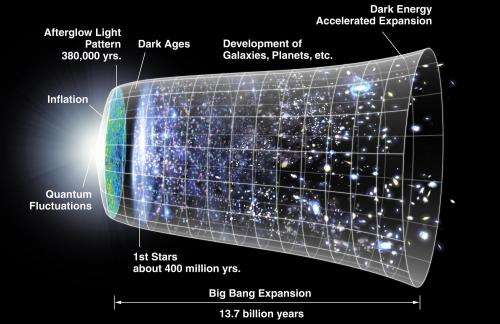Intelligent Life
SCIENCE - SPIRITUALITY, 7 Nov 2016
Dr. Emanuel E. Garcia – TRANSCEND Media Service
 A new study of data from the Hubble Space Telescope has shown that the number of galaxies is ten times what astronomers had previously thought: nearly 2 trillion.
A new study of data from the Hubble Space Telescope has shown that the number of galaxies is ten times what astronomers had previously thought: nearly 2 trillion.
Think of that for a moment. Two trillion galaxies, each containing approximately 400 billion stars.
If we assume that there is at least one earth-like planet in each galaxy (and this is being extremely conservative – it has been suggested that there are two billion earth-like planets in the Milky Way alone, and possibly even far more).
But let’s be very conservative and go with two trillion. How realistic would it be to assume that only one out of two trillion candidates – our Earth – could, over the 14.5 billion years of the universe’s existence, support so-called intelligent life?
Well, if the odds are 1 in two trillion, I guess that answers the question. If not, then the more significant question becomes either “Can intelligent life survive itself?” or “Who will destroy whom first?”
The record of intelligence on our planet is one to be looked at carefully. Despite the various definitions of what actually constitutes ‘life’, there is agreement upon two matters: a drive to replicate, and a drive to destroy other life forms to ensure replication. In the case of humankind, societal organisation has freed members of the species from the biological imperative of reproduction – we now live far beyond our reproductive years in many places – so that we may exert our influences in other ways.
Organised science has allowed our greatest minds to penetrate the mysteries of the atomic nucleus, to peer into the recesses of the heavens, to manipulate the genome, and to wage war ever more efficiently with ever more lethal consequences.
If there is a grand unified theory of human behaviour, it may be summed up by the delicate balance of Love and Power. But even here we must face the humbling fact that our vaunted human love comes at the expense of other life forms: our towns, villages, cities, nations – all of our settlements and property, designed to make our living ostensibly more comfortable and secure – presume to displace anything organic or inorganic in our paths.
And as for Power, well, one may measure human progress very precisely in direct proportion to the levelling of power, to the abolition of exceptionalism with respect to gender or possessions or social status. By this yardstick there is still far to go. And by the yardstick of extending equal rights and respect to all citizens of the planet, in the service of pacific co-existence, there seems to be an infinity.
According to the adage, only an optimist can imagine things getting any worse: after all, the globe is heating up exponentially, nuclear arms are on hair-trigger alert, and the species itself is capable of being the agent of its own extinction.
But I’m an even more optimistic optimist because I think there’s a silver lining – maybe we will have spared whoever else is out there the affliction of meeting up with and learning from our kind of intelligence.

This is an artist’s concept of the metric expansion of space, where space (including hypothetical non-observable portions of the universe) is represented at each time by the circular sections. Note on the left the dramatic expansion (not to scale) occurring in the inflationary epoch, and at the center the expansion acceleration. The scheme is decorated with WMAP images on the left and with the representation of stars at the appropriate level of development. Credit: NASA
__________________________________________
Dr. Emanuel E. Garcia is an American poet, novelist and physician who now resides in New Zealand. He may be contacted at emanuelegarcia@gmail.com.
This article originally appeared on Transcend Media Service (TMS) on 7 Nov 2016.
Anticopyright: Editorials and articles originated on TMS may be freely reprinted, disseminated, translated and used as background material, provided an acknowledgement and link to the source, TMS: Intelligent Life, is included. Thank you.
If you enjoyed this article, please donate to TMS to join the growing list of TMS Supporters.

This work is licensed under a CC BY-NC 4.0 License.
5 Responses to “Intelligent Life”
Read more
Click here to go to the current weekly digest or pick another article:
SCIENCE - SPIRITUALITY:
If more people would look up the world would be a better place.
While there are exceptional individuals, I rate the human species with an F minus.
Recall too that the Buddha was not a pacifist. The war between good and evil persists.
Note also that intelligent is not smart.
Thanks for the fine work, as usual, Emanuel Garcia!
Thanks for the fine illustration, Antonio! (Why do I suddenly feel so infinitesimal?) It looks like a megaphone of space-time aimed at us little, self-important mortals, and the Voice Within is crying/singing/sighing: Wake up….
Eden: How was the Buddha “not a pacifist”? That’s news to me…, and probably several hundred million of his followers. (Of course, some of his “followers”–or those who thought they were–were not pacifists, but you know what they say: there’s one in every crowd!)
Again you inspire, Dr Garcia, so let me prattle.
Perhaps we are nothing more than vehicles for the bacteria in our digestive tracts. So when a guy says, “I hate your guts,” he really speaks from his intestinal masters, builds bombs, destroys competitors, so his own shit can prevail, literally. God might be a microbe and the solution to human warfare rests more in probiotics than diplomacy.
When considering the pervasiveness of life on this planet, one has to wonder why the bodies near us, the moon and Mars, are dead. Attributes that differ markedly are that earth has a greater density, a magnetic field and a grounding charge. This leads to the notion that the earth’s inner core is compressed subatomic matter of opposite charge to solar radiation and that life is a suspension between. Further, it follows that the earth’s core would be short-circuited and extinguished by emissions from multiple atomic bombs, snuffing out the viability of our planet on a geological level.
Our species makes its mark, our cities great land reefs, our pollution the respiration of long-dead dinosaurs. Eventually we’ll move on in the biological struggle and new forms will emerge. Well, unless somebody’s gut tells ’em to nuke it all away first.
Thanks to all the commentators.
I should note a correction — in my essay I say that the universe is 14.5 billion years old when in fact the best estimate, as indicated by the graphic, is 13.7 billion years (give or take a few months I guess!)
Sorry about that.
Emanuel
I apologize for my brassy previous comment. On a more serious note:
Modern battle is so hideous that initiating it today defies reason. Outmoded by democracy, warfare no longer serves the biological imperative, and it is as if contemporary perpetrators have been taken over by some unknowable force beyond comprehension. Until other aspects come to light.
“They started bringing us these pills. With every pill you stay up for three days. You don’t feel anything, except that you’re awake. When the enemy comes you see him as a pig, a monster, and you want to kill him,” said an ISIS fighter about Captagon (Fenethylline), a codrug of amphetamine and theophylline. (Captagon: The drug fuelling [sic] the war in Syria https://www.youtube.com/watch?v=zd7_wAOjplA) Numerous sources also mention that suicide bombers are prepared for their grisly missions by getting hopped up on Captagon and other drugs.
In his book Blitzed, author Norman Ohler’s investigation makes an overwhelming case that, if drugs are not taken into account, our understanding of the Third Reich is fundamentally incomplete. The book reports Hitler’s addiction to methyl-amphetamine (Pervitin) and oxycodone (Eukodal), accounts his demise following drug withdrawal in February, 1945, after the destruction of the Pervitin and Eukodal factories by allied bombing.
With wisdom and insights from “outside the box,” perhaps we can manage our problems here on earth and our planet may someday support a peaceful, enlightened humanity.